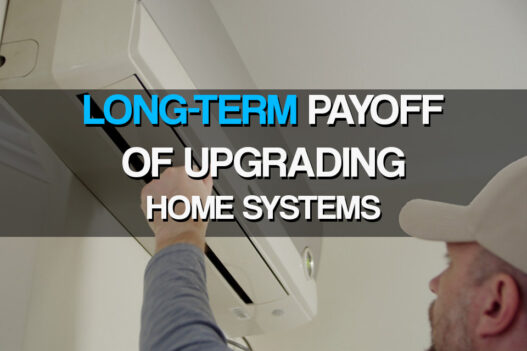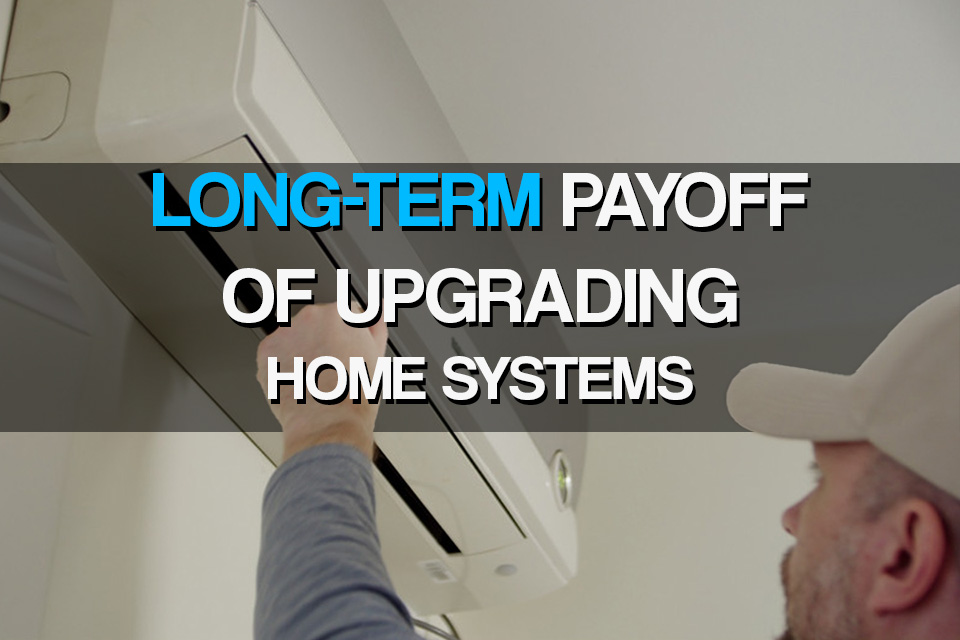Home systems quietly shape your budget every month. Heating, cooling, water heating, and lighting account for most utility spending, so even modest efficiency gains compound year after year. Comfort also improves when equipment runs at steady, optimized settings rather than cycling hard. According to Gitnux, roughly 40% of U.S. household electricity consumption goes toward heating and cooling, which is why efficiency upgrades in this category deliver outsized returns.
The Case for HVAC Upgrades
Aging HVAC equipment wastes energy, struggles in extreme weather, and costs more to maintain. Replacing an old air conditioner with a high-efficiency heat pump or a modern variable-speed system can shrink bills while stabilizing indoor temperatures. Insist on proper load calculations and duct testing so new equipment actually performs to spec. According to the U.S. Department of Energy, upgrading HVAC units can cut energy use by up to 50% for electric systems and about 10% for gas systems, savings that show up immediately on utility bills and, over time, in fewer repairs and longer equipment life.
Electrical, Lighting, and Smart Controls
Electrical upgrades rarely grab headlines, yet they prevent nuisance trips, improve safety, and open the door to better controls. LED retrofits lower lighting loads and run cooler, while smart thermostats, occupancy sensors, and scheduling reduce wasted runtime. Whole-home surge protection and a modern panel protect sensitive electronics and prepare the house for future electrification, including EV charging, induction cooking, or heat pump water heaters.
Water Heaters and Plumbing Efficiency
Hot water is a quiet energy hog. Heat pump water heaters can cut usage compared with standard electric tanks, and high-efficiency gas models waste less heat up the flue. Add low-flow fixtures, insulate hot-water lines, and install recirculation controls to shorten wait times at distant taps. Pairing these steps reduces both utility costs and water waste without sacrificing comfort.
Roof, Insulation, and Air Sealing
Upgrades work best when the building envelope supports them. A reflective or well-ventilated roof lowers attic temperatures, while added insulation and careful air sealing limit thermal losses. Tight homes need balanced ventilation to protect indoor air quality, so include fresh-air strategies like energy recovery ventilators. The result is quieter rooms, fewer drafts, and smaller equipment needs.
Maintenance: Protecting the Investment
Upgrades pay off only if they stay tuned. Replace filters on schedule, clear outdoor coils, and keep condensate lines clean to prevent leaks and shutdowns. Record performance metrics such as supply and return temperatures, static pressure, and power draw so small deviations are caught early. According to Today's Homeowner, HVAC systems should be serviced twice per year to preserve efficiency and extend equipment life.
Financing and Resale Considerations
Many projects pencil out when you include rebates, tax credits, and low-interest financing. Evaluate payback alongside comfort, noise, and maintenance benefits; a slightly longer payback can still be smart if it reduces risk or improves livability. Document every upgrade with manuals, permits, and warranty details. Buyers value proof of care, and efficient homes often command stronger offers.
A Practical Roadmap for Homeowners
Start with an energy audit to identify the cheapest kilowatt-hours to save. Fix envelope leaks, right-size HVAC, then modernize controls and water heating. Stagger projects to match seasonal availability and contractor schedules, and set aside a small annual reserve for preventive maintenance. This methodical approach compounds efficiency, comfort, and reliability over the long haul.
Upgrading home systems is not a one-time expense; it is a strategy for lower bills, more consistent comfort, and a higher resale value. By sequencing improvements across the envelope, HVAC, controls, and hot water, you capture immediate savings and durable performance. Follow a maintenance cadence, keep records, and revisit settings as your household changes. Smart upgrades today create a quieter, safer, and more efficient home for years to come. Returns compound with every season and year.
The post The Long-Term Payoff of Upgrading Home Systems appeared first on MoneyMiniBlog.
















